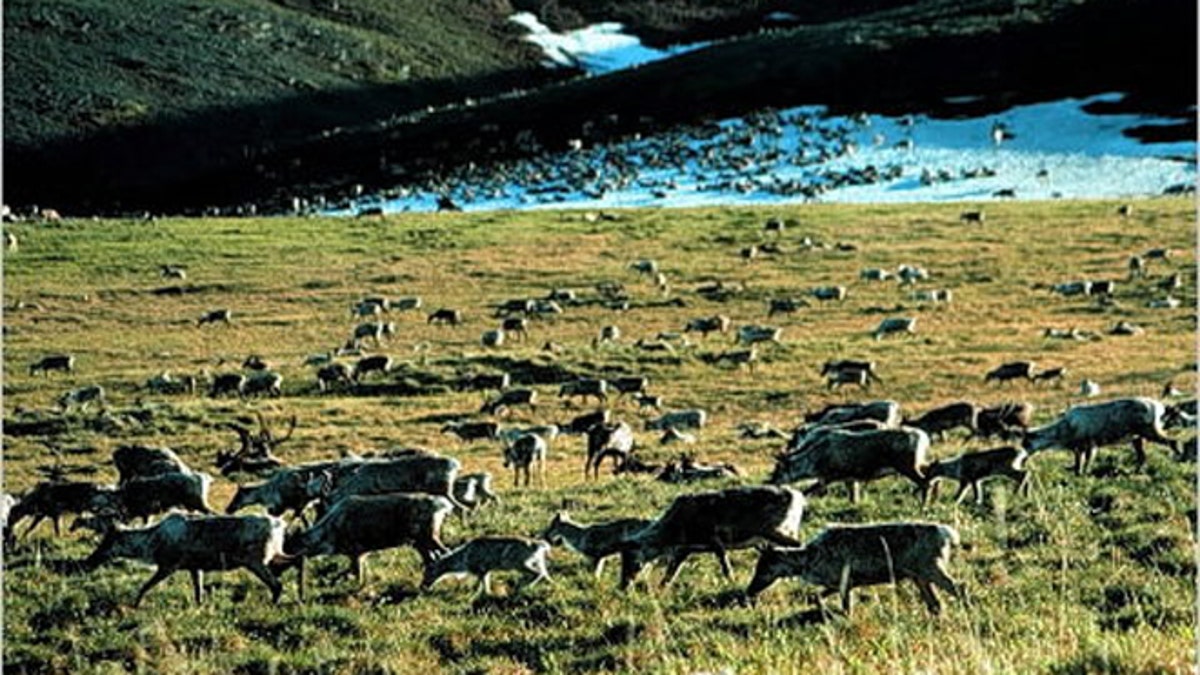
Caribou grazing in the Arctic National Wildlife Refuge in Alaska. (AP)
The Obama administration’s National Climate Assessment, released with much fanfare in May, warns that we are beginning to experience drastic effects from human-induced global warming. The report depends heavily on “consensus reporting,” the agreement of a large number of scientists that the statements are true or that new information “increases confidence” of the large group of authors.
But as someone who has studied climate and its effect on biology for 45 years, I know this way of expressing science is, in fact, deeply unscientific. Consensus reporting is in reality a way of avoiding or obscuring the facts, most especially in science, where the disproval of previously held truths is the central aim. A close examination of the assessment shows that many of the dire forecasted effects that consensus aims to buttress are highly selective, mostly unproven or simply made up.
[pullquote]
Few things in the climate assessment are more emotionally explosive than its conclusions about various species around the globe—in a word, about life itself. As with many technical reports, the sources of many of the statements that lead us to believe life is profoundly threatened by climate change are buried in the footnotes. But the footnotes often differ greatly from the conclusions published in the main body of the report. Here are some examples, taken from a summary section of the report on “Biological Responses to Climate Change” on pages 203-205 of the climate assessment report:
1. The claim: Population fragmentation of wolverines in the northern Cascades and Rocky Mountains is expected to increase as spring snow cover retreats over the coming century. The idea is that less snow cover means smaller and more fragmented areas where the wolverine lives in winter. But the paper cited as the source for this (citation 123, page 214) states to the contrary that: “Large (greater than 1000 sq. km.) contiguous areas of wolverine habitat are predicted to persist within the study area throughout the 21st century for all projections.” And the analysis is based on forecasts of snow cover from climate models, which are acknowledged even by their authors to be weakest in forecasting precipitation.
2. The claim: As temperatures got warmer over a 40-year period, songbirds at a bird-banding station in western Pennsylvania were being recorded as measurably smaller in relation to the “mean regional temperatures from the previous year.” But in the study used to produce that statement (citation 85, page 212), the authors do not mention body size change at all, and just make a general statement that there is “a complex and dynamic annual cycle in songbirds, with responses to climate change differing among species and migration seasons.”
3. The claim: Warmer and drier conditions during the early growing season in high-elevation habitats in Colorado are “disrupting”—a loaded term-- the timing of various flowering patterns, while birds, bees, and other pollinators were not tracking that timing; as a result there are “potential impacts” for flower propagation. On the contrary, the authors of the underlying study (citation 77, page 211) conclude that such timing changes are “unlikely to threaten population persistence for most species in our study area.”
4. The claim: Warmer springs in Alaska have caused earlier onset of plant emergence, and decreased the variation in growth and availability of forage to breeding caribou. This ultimately reduced calving success in caribou populations. The implication is that warming will necessarily have a negative effect on caribou. However, the paper cited (citation 138, page 215) is much more cautious, stating that such an adverse effect is conceivable but a lot more study is needed. Wildlife populations can and do adjust to changes, but this can take some time.
5. The claim: Variation in the timing and magnitude of precipitation due to climate change was found to decrease the nutritional quality of grasses, and consequently reduce weight gain of bison in the Konza Prairie in Kansas and the Tallgrass Prairie Preserve in Oklahoma. In fact, the publication underpinning the statement (citation 124, page 214) says that "Greater late-summer precipitation increased bison weight gain . . . greater midsummer precipitation decreased weight gain." This is neither negative nor positive in terms of global warming, because the climate models are weakest in forecasting rainfall even annually, let alone seasonally.
There is no doubt that humanity has put many environments and species on our planet under stress, but global warming is far from the foremost of those pressures. What the assessment ignores, in its bid to bring all of these challenges under one big climate tent, is the real history of life itself: endlessly changing, highly adaptable, and never subject to the kind of stasis that the climate change consensus imagines, wrongly, to be Nature’s ideal state.
